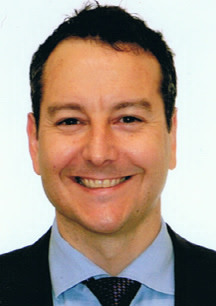
Q&A Dr Damian Marucci
Dr Damian Marucci is a highly respected Plastic and Cosmetic Surgeon based in Kogarah, Sydney and he takes the time for common Q&A for people wanted to know more about Plastic and Cosmetic Surgery.

PSH: Many patients want to combine procedures into the one surgery to save costs on hospitals stays and reduce recovery time. How many procedures will a plastic surgeon do in one surgery?
Dr Marucci: Combining procedures is common. There are many combinations of procedures which naturally go together – like combining a breast lift with a tummy tuck for someone who is interested in both procedures. All the surgery is being performed in contiguous body zones, and the dramatic change in body contour of both the chest and abdomen can be instantly gratifying to both the surgeon and patient.
However, the main issue in combining procedures is to consider whether the patient is fit enough for a longer anaesthetic. Increasing the duration of an operation increases the risk of complications. For example, the risk of blood clots in the legs increases with increased length of surgery, and prolonged surgery puts extra strain on your heart and lungs, which could be an issue with some patients.
PSH: Why do some do multiple surgeries and others want to do separate surgeries?
Dr Marucci: All decisions in surgery should be made with the surgeon and patient deciding things together.
Sometimes a surgeon will want to perform separate surgeries as the result of one will have an impact on the other, so they want to let everything settle down from the first procedure before doing the second. The main thing is always patient safety and comfort.
Some patients might want to combine procedures for a number of reasons
- Combine all their recovery times into one to minimise downtime
- “Get it all out of the way in one go”
- It might be cheaper that way
- Don’t want to wait for multiple procedures for the final result
Some patients might only be able to have one procedure at a time because
- They can only afford to do one procedure at the present time
- They can’t afford the longer recovery time with multiple surgeries
- The surgeon/anaesthetist doesn’t think they’re fit enough to have it all done at once
PSH: What is the estimated time off work required after a breast augmentation?
Dr Marucci: Every patient is different and I think this also depends on surgical technique. I tell my patients to plan for 2 weeks off work and no exercise for 3 weeks. Patients who are having very large implants or implants which are being placed under the muscle may need some extra time beyond that. I advise patients not to drive for the first week at least, after which they should see how they feel.
PSH: Will I still be able to breastfeed after having breast implants?
Dr Marucci: Yes! Implants are placed either under the muscle or under the gland. In either location, they will have no effect on the ability to breastfeed. Also, there are no issues with the resulting breast milk produced.
PSH: Is there anything to keep in mind when considering breast implants and wanting to breastfeed afterwards?
Dr Marucci: The only thing is that pregnancy and breastfeeding will affect the size and shape of your breasts. The implants won’t change, but the overlying breast tissue will (and gravity always wins). Patients may require some touch up surgery (for example, a small lift) after they have finished having a family.
PSH: Is it better to have implants under or over the muscle?
Dr Marucci: The cosmetic result and longevity of that result all depend on the soft tissue coverage of the implant. If you are slim and don’t have a lot of subcutaneous fat, there won’t be a lot of coverage of the upper pole of the implant. In these cases, it is better to have the implant placed under the muscle. If you can “pinch an inch” of skin and fat over your upper chest, then your implants can be safely placed under the glands.
Most of the augmentations I perform are (at least partially) under the muscle, in a “dual plane” where the upper pole of the implant is covered by muscle and the lower part by the breast gland.
Studies have shown that implants placed under the muscle have a lower incidence of capsular contracture (the scar tissue that forms around an implant). The flip side is that there may be some increased risk of bleeding and animation of the implant (the implants moves when you flex your pecs) with implants placed under the muscle.
PSH: Do you have any tips for faster healing after a breast lift and breast augmentation?
Dr Marucci: Yes. Take it easy. Don’t try to do too much. Make sure you have everything organised so that you don’t have to worry about any sort of domestic chore for the first few weeks. Wait until you’ve been given the all clear before jumping back into exercise. Definitely don’t take up smoking!
PSH: Does the nipple/areola always need to be moved when getting a breast lift or augmentation?
Dr Marucci: A breast lift, or a mastopexy, is one designed to improve the shape of the breast by moving the nipple and breast tissue back up onto the chest where it belongs. It involves scars around the nipple, vertically down on the breast skin and a variable scar in the fold underneath the breast. If someone is having a “breast lift”, almost by definition the nipple areolar complex is being moved into a better position
With a straight breast augmentation, there is only a single incision which is used to access the space where the implant will be placed – whether that is under the muscle or over the muscle (under the gland). Although an anatomical (teardrop) implant alone may slightly elevate the position of the nipple, a breast augmentation procedure is not really a “moving the nipple” operation.
Sometime, a patient is unhappy not only with the shape of their breasts but also with the volume. In these cases, the patient may wish to have both procedures – an augmentation with implants to increase the breast volume and a breast lift (mastopexy) to improve breast shape. This procedure is called an “augmentation mastopexy”. Some patients who come along asking for breast augmentation actually need an augmentation mastopexy, as the position of their nipple is too low.
PSH: How soon after a breast augmentation can you start exercising again?
Dr Marucci: I advise my patients to give themselves 3 to 4 weeks off exercises after breast augmentation.
PSH: Many young women with extremely large breasts have back problems, migraines and other health problems. Are they eligible for Medicare cover if it is causing health issues?
Dr Marucci: The condition of having large breasts is called “macromastia”. The most common complaints that go along with this condition are neck pain, shoulder indentations, a rash in the fold underneath the breasts, difficulty exercising and difficulty finding clothes that fit. The best treatment for macromastia is a breast reduction. This surgery is performed under general anaesthesia in a hospital operating theatre. There is a medicare item number for a breast reduction surgery. This means that medicare will pay part of the fees of the surgeon and the anaesthetist. If you are in a health fund, and you have a level of cover which includes breast reduction surgery, then the combination of medicare and your health fund should cover the hospital costs of surgery as well as a larger part of the fees of your surgeon and anaesthetists. The difference between what your surgeon and anaesthetist charges, and how much is covered by medicare and your fund is called the “gap”. You should know what the “gap” is before you sign on for any surgical procedure.
PSH: What is the estimated recovery time for a tummy tuck?
Dr Marucci: A tummy tuck procedure involves removing excess skin and fat of the lower abdomen, tightening the muscles of the abdomen in the midline and repositioning the nipple. A catheter tube is placed in the bladder at the beginning of the operation and the patient is placed is a special surgical corset (called a “binder”) at the end of the operation. Drains are usually placed underneath the skin.
Many patients stay in hospital until their drains are removed (anywhere between 3 and 5 days). The catheter is removed the day after surgery so the patient can walk around. I allow my patients to shower the day after the surgery. I advise them to take it easy for a few weeks, with no driving for at least 2 weeks. I tell my patients that they can’t exercise or lift anything heavier than 3 litres of milk for 4 weeks after the surgery. The binder (compression garment) needs to be worn day and night for 4 weeks as well.
PSH: There have been quite a few changes with regards to Medicare and what they do and don’t cover when it comes to plastic surgery procedures. Can you give a general overview on when Medicare is available for abdominoplasty or tummy tucks?
Dr Marucci: The regulations around abdominoplasty surgery have recently changed. The medicare item number is only applicable for people who have undergone significant weight loss – meaning more than 5 BMI points. In addition to this weight loss, the following conditions also must be satisfied:
(a) there is intertrigo or another skin condition that risks loss of skin integrity and has failed 3 months of conventional (or non surgical) treatment; and
(b) the redundant skin and fat interferes with the activities of daily living; and
(c) the weight has been stable for at least 6 months following significant weight loss prior to the lipectomy
PSH: How long after pregnancy is it best to wait before having a tummy tuck?
Dr Marucci: You should wait at least a year after pregnancy to let everything settle down before undergoing a tummy tuck.
PSH: What are the main things you suggest a patient does to prepare for any plastic surgery procedure?
Dr Marucci: These can be divided into the physical and the mental.
Overwhelmingly, patients considering a cosmetic plastic surgery procedure are fit and well. It is important the remain so! But you can never be too healthy, so cut down on the alcohol, cut out the smoking and get as much exercise in as you can before you have to suspend your gym membership during your recovery.
Mentally, it is important to go into this surgery with your eyes wide open. Make sure you understand what the plan is, what the post op instructions are and how you are going to manage work/ home and life during your convalescence. I want my patients to look forward to their surgery – I truly believe that a positive attitude aids the recovery.
If you’d like more information about Dr Marucci click here or anything discussed in this Q&A check out the blogs below, or if you’d like to arrange a consult you can contact him on 02 9588 6374.
What Do I Need To Know About Implants?
Be Informed With Quality Information with Dr Marucci
Open Your Eyes and See the Light
